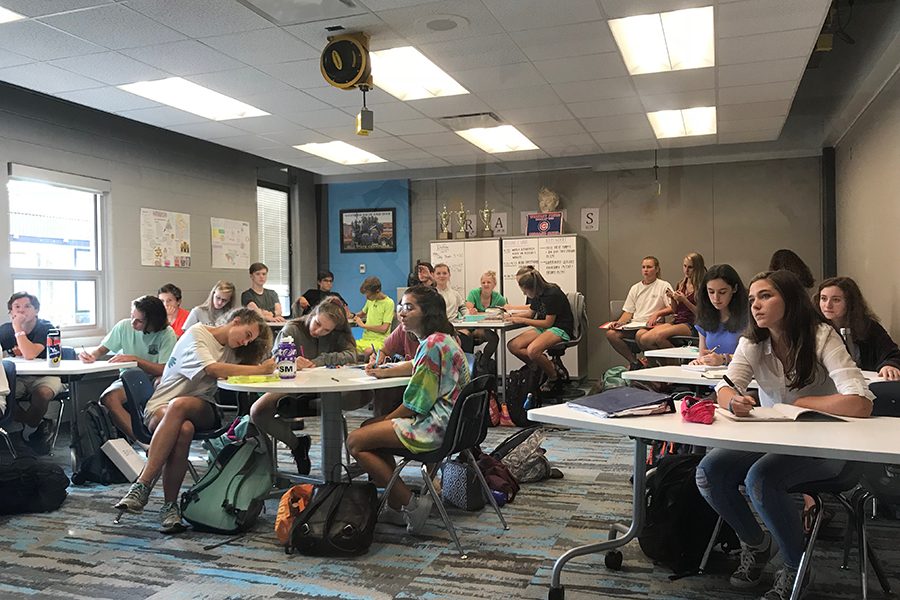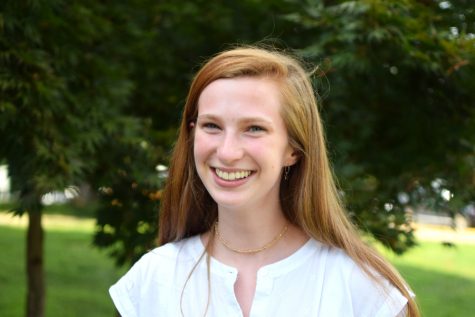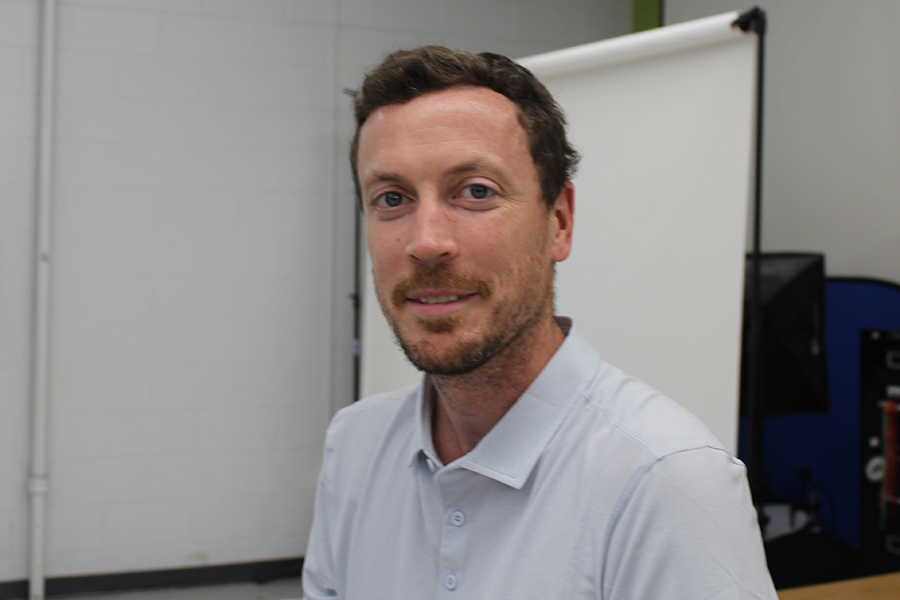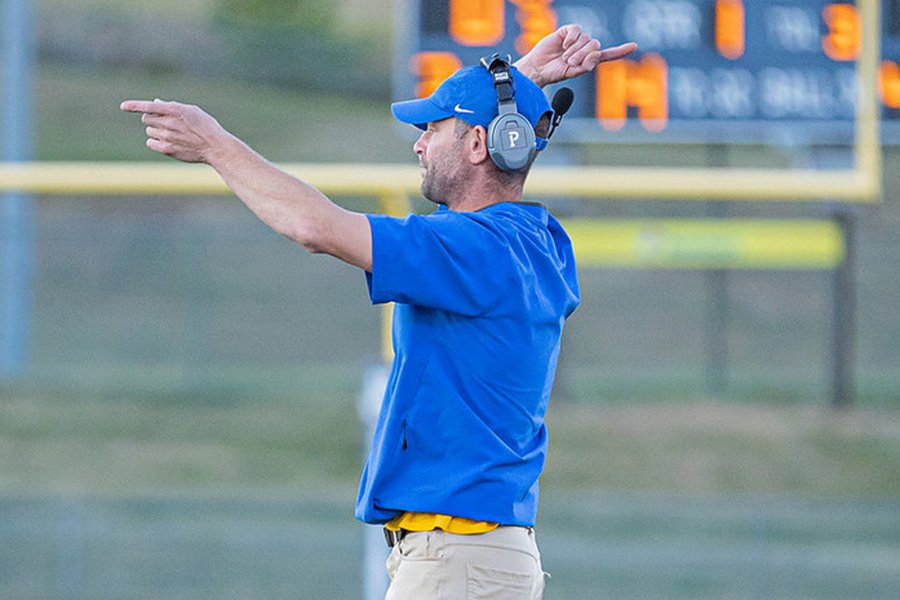Global Studies Students Learn Around the World
November 3, 2017
The shift from monotone cinderblock and rows of desks to removable walls, dry-erase tables, rolly chairs, and skylights, has given traditional classrooms a fresh and spacious feel. After many months of preparation and planning, the new 9th grade Global Studies course is up and running for the class of 2021. With new updates to the classrooms, teachers have the option to open doors between the English and history classes and combine the classes periodically.
“I do like the features of the new furniture and being able to open up the wall. It gives the kids a lot more space and light in the room. The curriculum hasn’t necessarily changed; we’re just trying to find new ways to make sure English and history overlap, so we’re making activities that we can do to weave them together. For example, we’re planning activities with The Bible as/in Literature to go along with teaching the development of Judaism and monotheism,” freshman history teacher Dan Bledsoe said.
Although the class has just begun, students enrolled have already developed differing opinions on the way of teaching.
“I don’t really like when they open the doors and both classrooms are in the same place because it gets kind of chaotic and it’s hard to focus,” freshman Will Jones said.
In contrast, freshman Jonathan Keller spoke highly of the class. “Global Studies is a very interactive class and you get really involved. What you’re reading in English is then brought into detail with history.”
ESA students also have blocked history and english classes. However, they are taking ESA Geography as a supplement for World History 1. The ESA students are currently reading The Odyssey in English, which circles back to concepts about the Mediterranean that they are learning in geography class. Lynn Define, the English teacher working with the freshmen ESA students, talks about her excitement for the upcoming year and integrated course.
“It’s combining everything I love about literature and writing with the really cool things in geography. But geography isn’t Global Studies, it’s the culture, and culture and literature go so well together,” Define said.
An all-grade field trip involving the new course was taken on October 11, where the ninth graders visited Ash Lawn, James Monroe’s house. Recently, Ash Lawn-Highland discovered a whole different template for Monroe’s house. Archeological finds have revealed that a foundation in the yard was Monroe’s actual home constructed in 1799, while the smaller structure standing today was built two decades later during his first term in his presidency.
“It relates to what they are learning in ancient history and how people have used artifacts and architecture and landscape to figure out what went on when we don’t necessarily have written records. It seems like a neat way to look at something more modern and local but that goes through the same process that historians used to study ancient history,” Assistant Principal Jennifer Sublette said.
“I thought that the information about archeology was interesting. It connected to what we learned at the beginning of the school year about archeology and the methods archeologists used to make discoveries about how people lived in the past,” Kelly Punsalan said, reflecting on the field trip.









